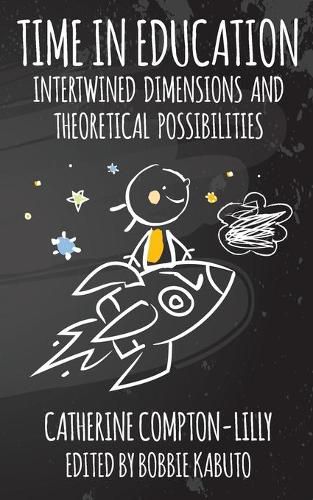Readings Newsletter
Become a Readings Member to make your shopping experience even easier.
Sign in or sign up for free!
You’re not far away from qualifying for FREE standard shipping within Australia
You’ve qualified for FREE standard shipping within Australia
The cart is loading…






This title is printed to order. This book may have been self-published. If so, we cannot guarantee the quality of the content. In the main most books will have gone through the editing process however some may not. We therefore suggest that you be aware of this before ordering this book. If in doubt check either the author or publisher’s details as we are unable to accept any returns unless they are faulty. Please contact us if you have any questions.
Time in Education: Intertwined Dimensions and Theoretical Possibilities is part of the Garn Press Women Scholars Series. It explores the intersection of literacy and the construct of time within education through the scholarship of Catherine Compton-Lilly, who highlights the complexity of studying learning. In particular, she focuses on how and what people learn over time within school-based structure, which entail established power structures that define who we are as learners, privileging some learners and marginalizing others.Catherine Compton-Lilly presents a theoretical kaleidoscope of learning and literacy over time and illustrates how understandings of learners and learning shift as educators cast their gaze through different theoretical lenses. She asks how people reconcile, or strive to reconcile, complementary and contradictory framings of learners-a dilemma often faced by educators and parents. Specifically, Compton-Lilly proposes that time acts as a constitutive dimension of people’s experiences that significantly affects how people make sense of their worlds by exploring the temporal affordances of three highly influential theories: Jay Lemke, Mikhail Bakhtin, and Pierre Bourdieu. To illustrate the temporal potential of these theories, she draws upon data from a ten-year case study of one student and his family. Attending to how people operate within time provides important insights into longitudinal processes including identity construction, literacy learning, and becoming a student. These insights are important not only to researchers who attempt to make sense of the experiences of children and teachers, but also to educators who must seek ways to acknowledge and effect the longitudinal trajectories of children.
$9.00 standard shipping within Australia
FREE standard shipping within Australia for orders over $100.00
Express & International shipping calculated at checkout
This title is printed to order. This book may have been self-published. If so, we cannot guarantee the quality of the content. In the main most books will have gone through the editing process however some may not. We therefore suggest that you be aware of this before ordering this book. If in doubt check either the author or publisher’s details as we are unable to accept any returns unless they are faulty. Please contact us if you have any questions.
Time in Education: Intertwined Dimensions and Theoretical Possibilities is part of the Garn Press Women Scholars Series. It explores the intersection of literacy and the construct of time within education through the scholarship of Catherine Compton-Lilly, who highlights the complexity of studying learning. In particular, she focuses on how and what people learn over time within school-based structure, which entail established power structures that define who we are as learners, privileging some learners and marginalizing others.Catherine Compton-Lilly presents a theoretical kaleidoscope of learning and literacy over time and illustrates how understandings of learners and learning shift as educators cast their gaze through different theoretical lenses. She asks how people reconcile, or strive to reconcile, complementary and contradictory framings of learners-a dilemma often faced by educators and parents. Specifically, Compton-Lilly proposes that time acts as a constitutive dimension of people’s experiences that significantly affects how people make sense of their worlds by exploring the temporal affordances of three highly influential theories: Jay Lemke, Mikhail Bakhtin, and Pierre Bourdieu. To illustrate the temporal potential of these theories, she draws upon data from a ten-year case study of one student and his family. Attending to how people operate within time provides important insights into longitudinal processes including identity construction, literacy learning, and becoming a student. These insights are important not only to researchers who attempt to make sense of the experiences of children and teachers, but also to educators who must seek ways to acknowledge and effect the longitudinal trajectories of children.